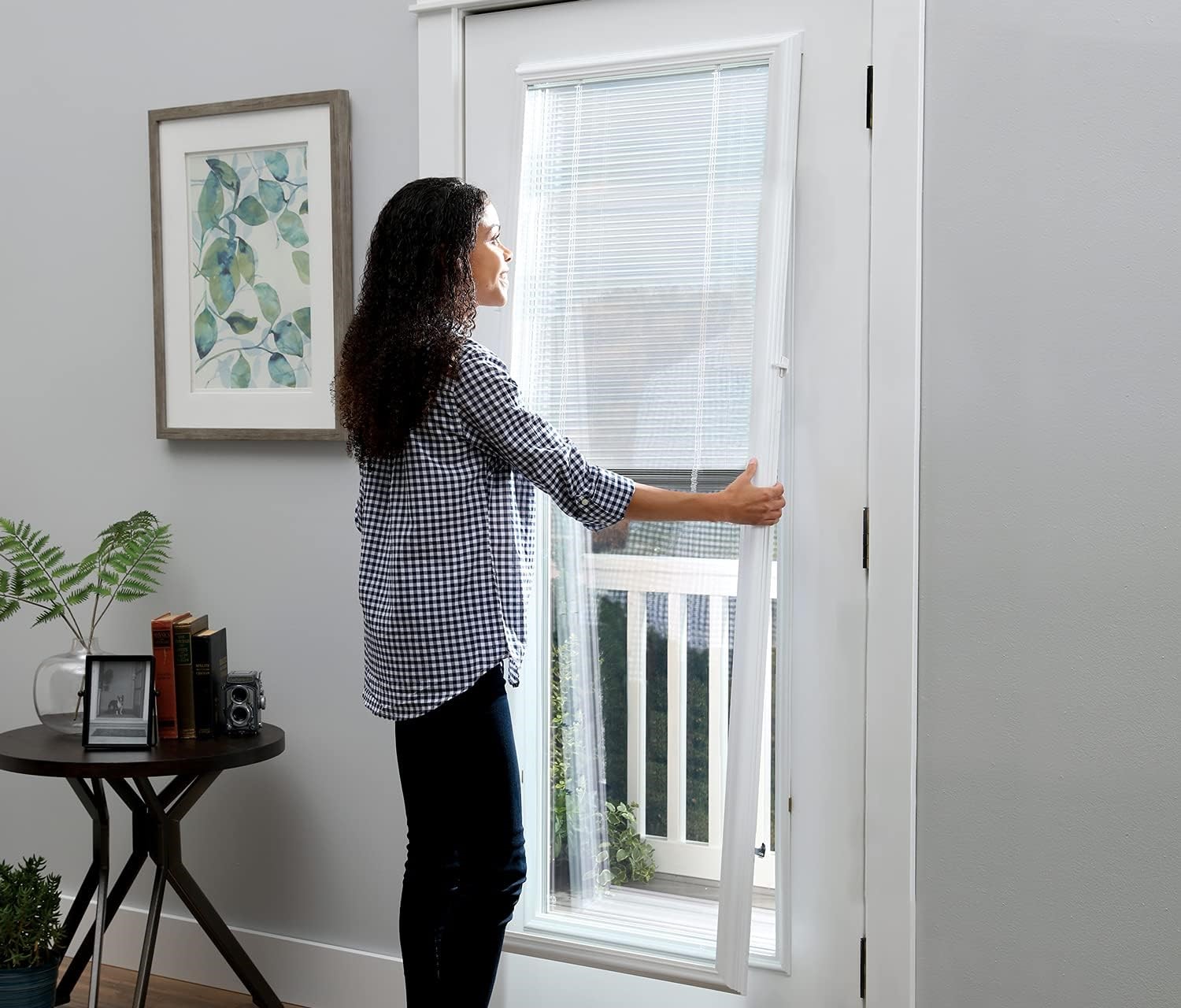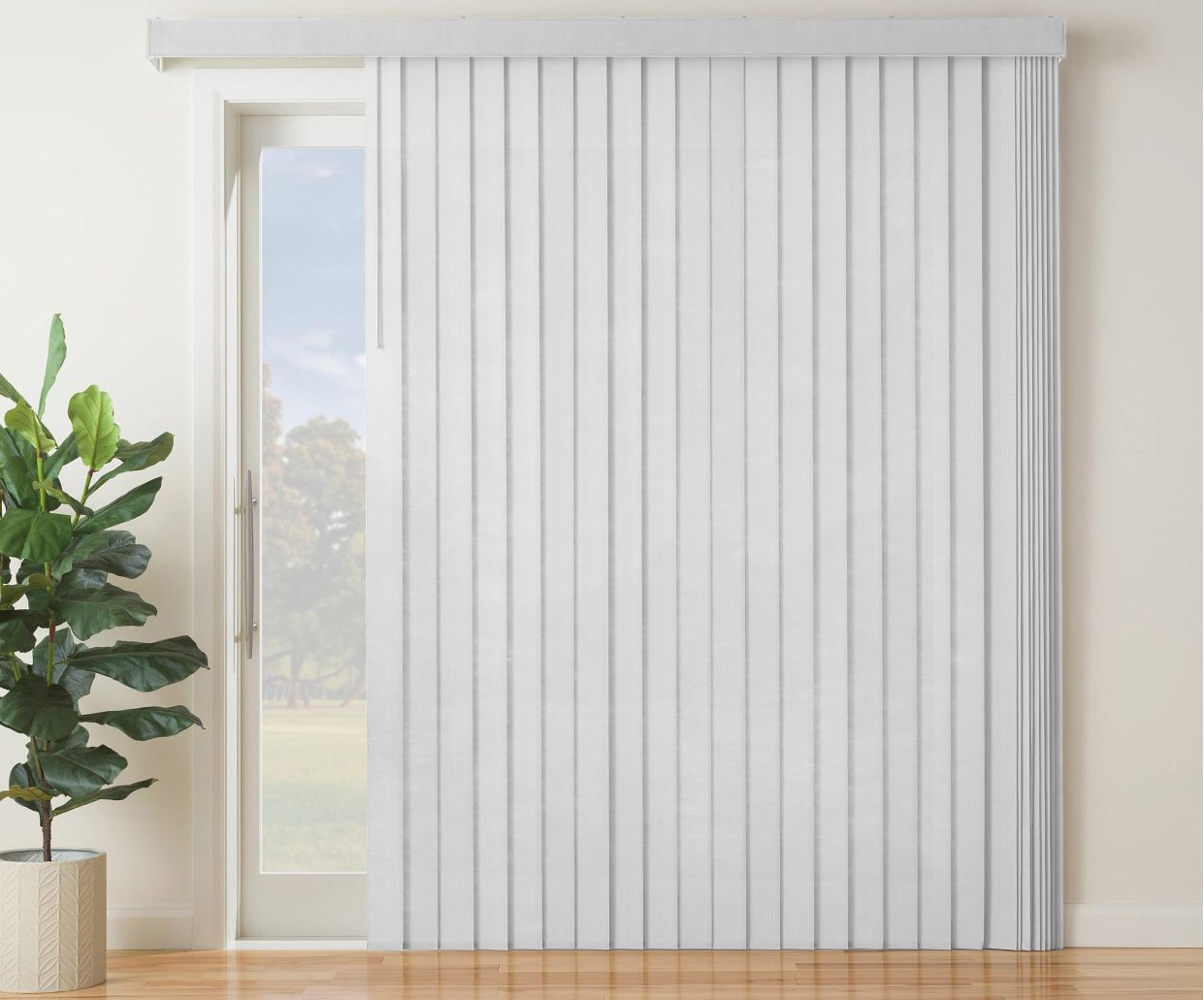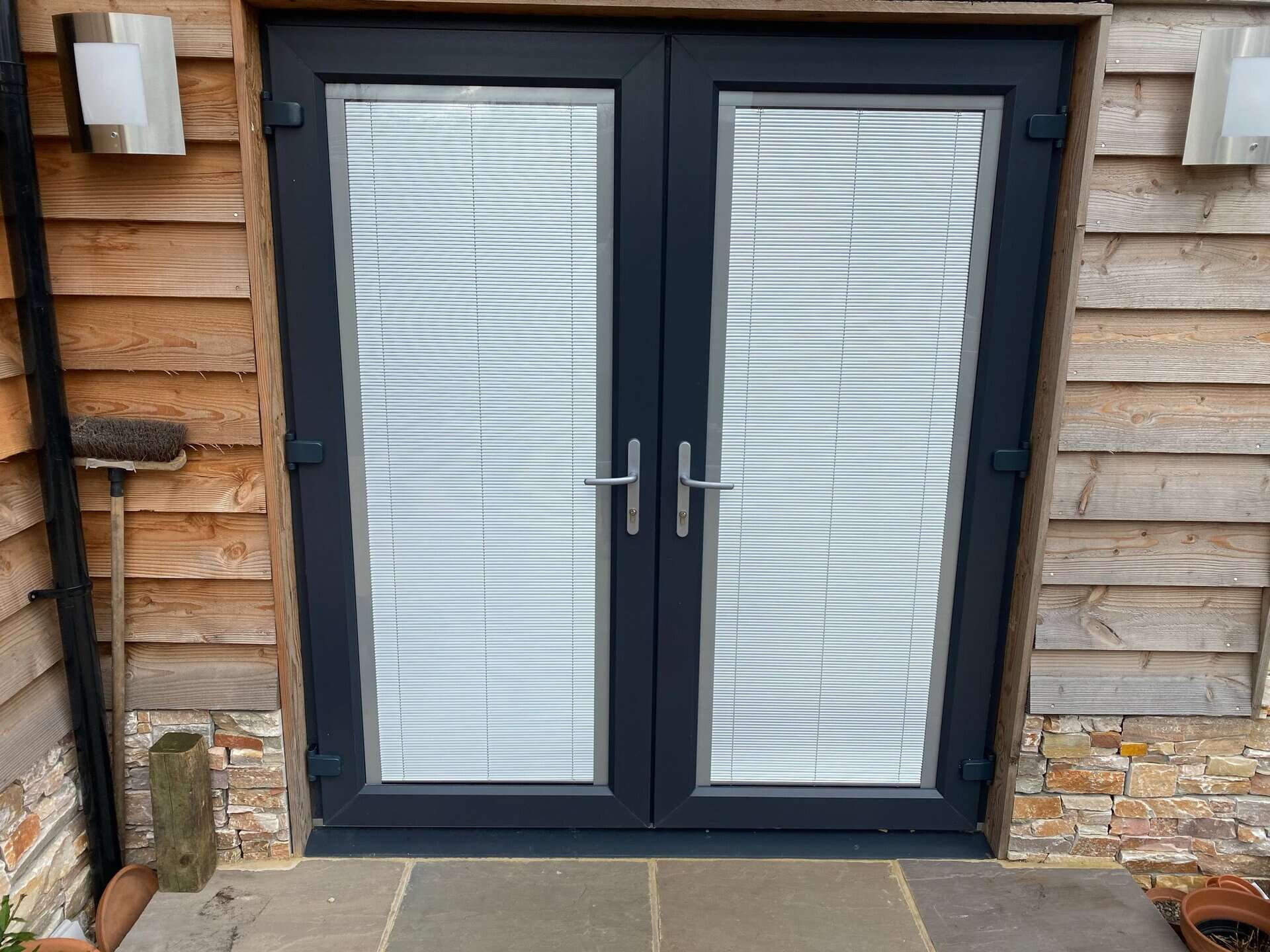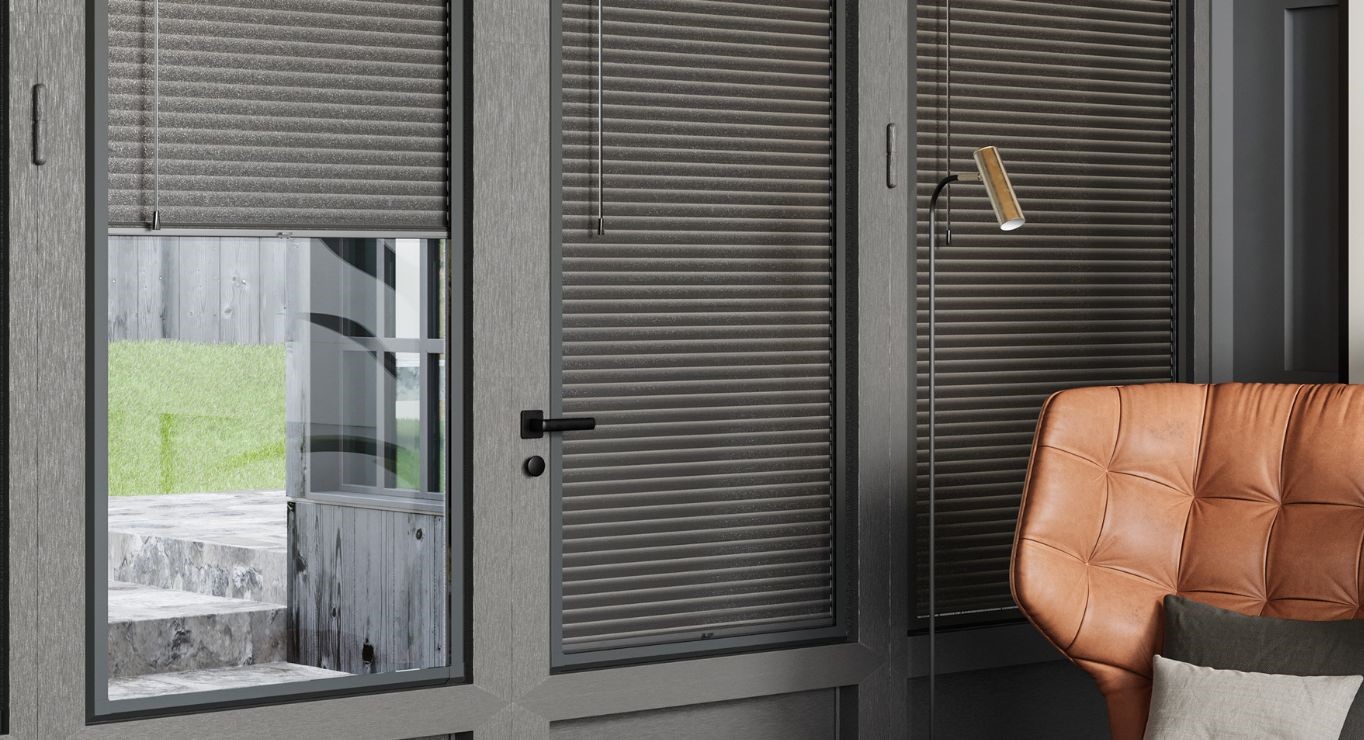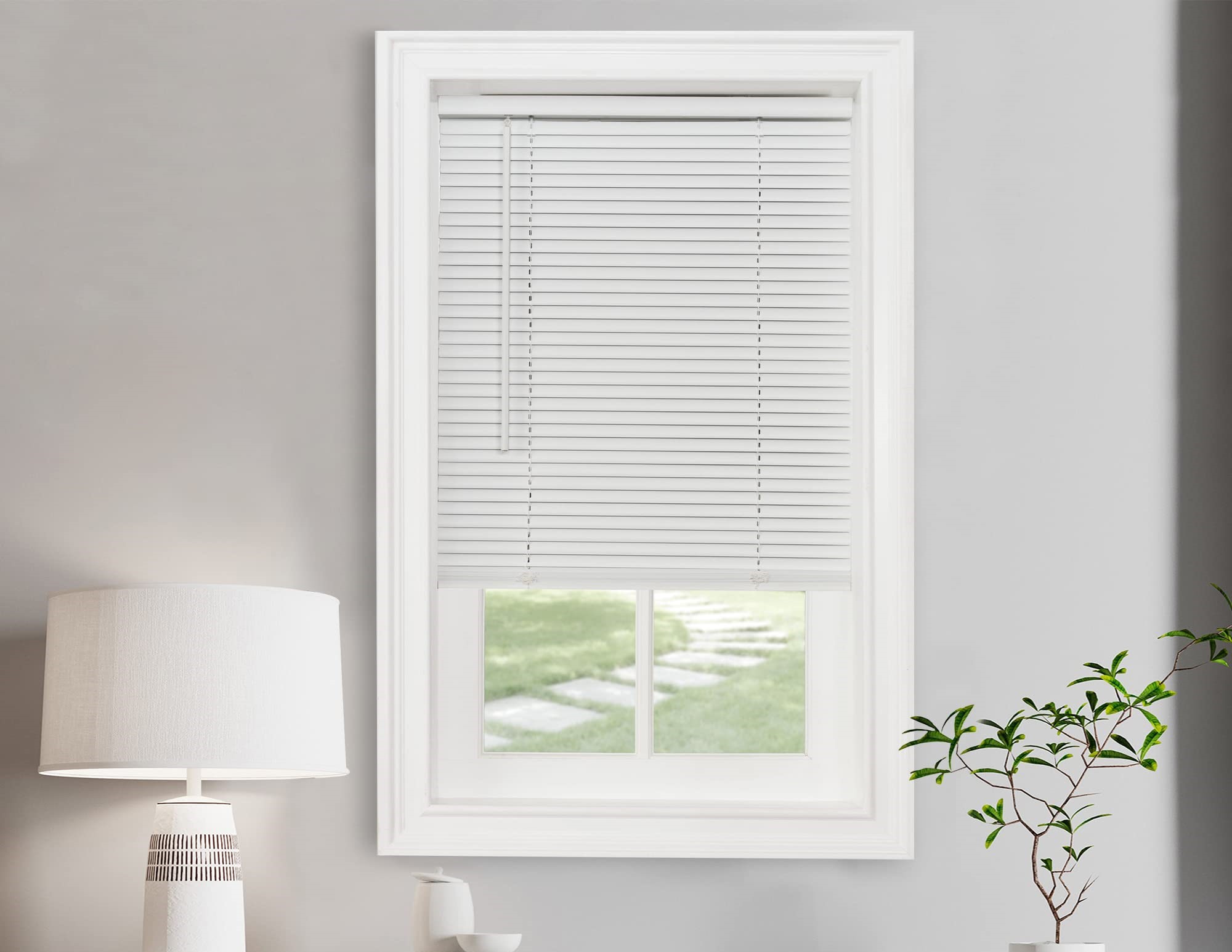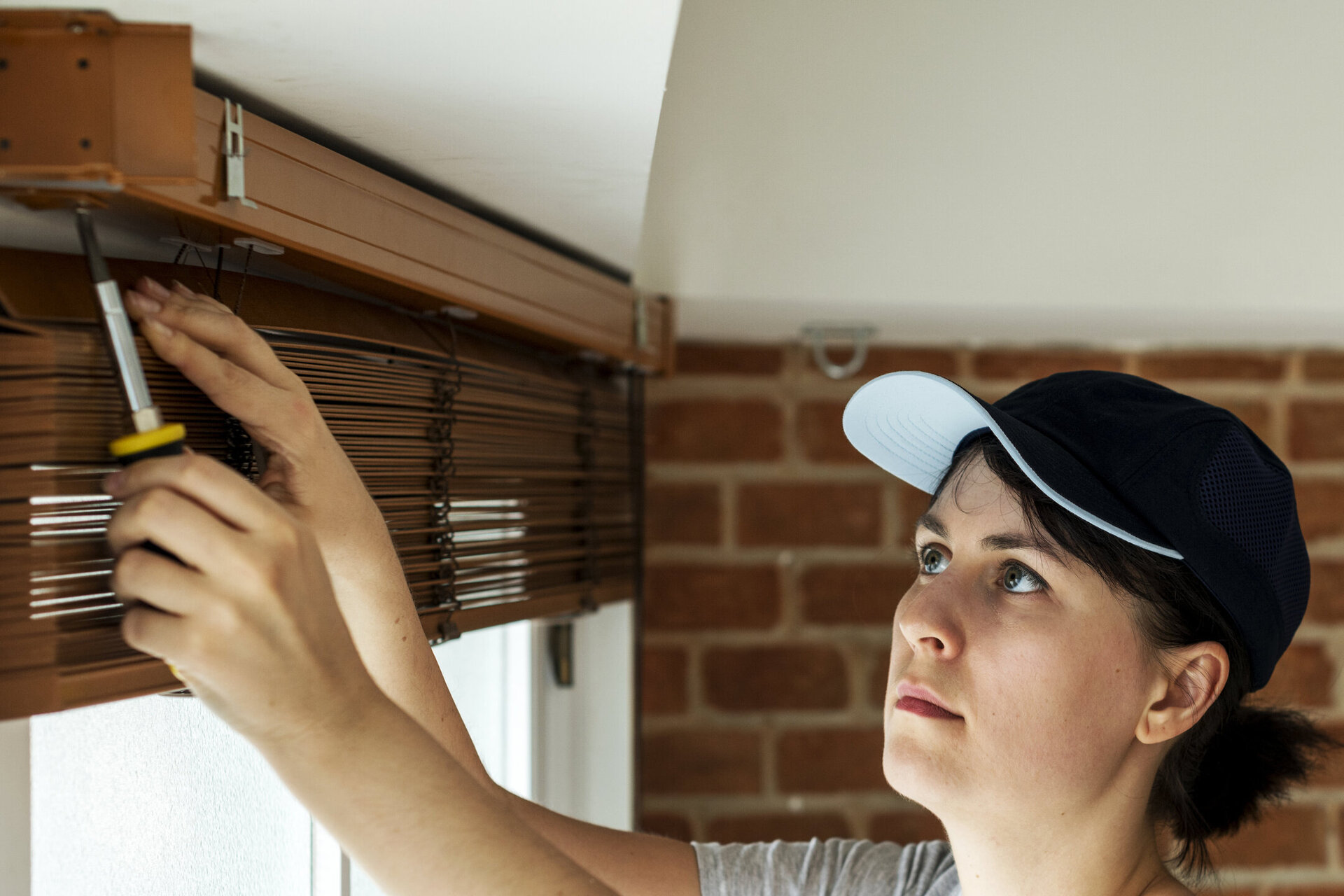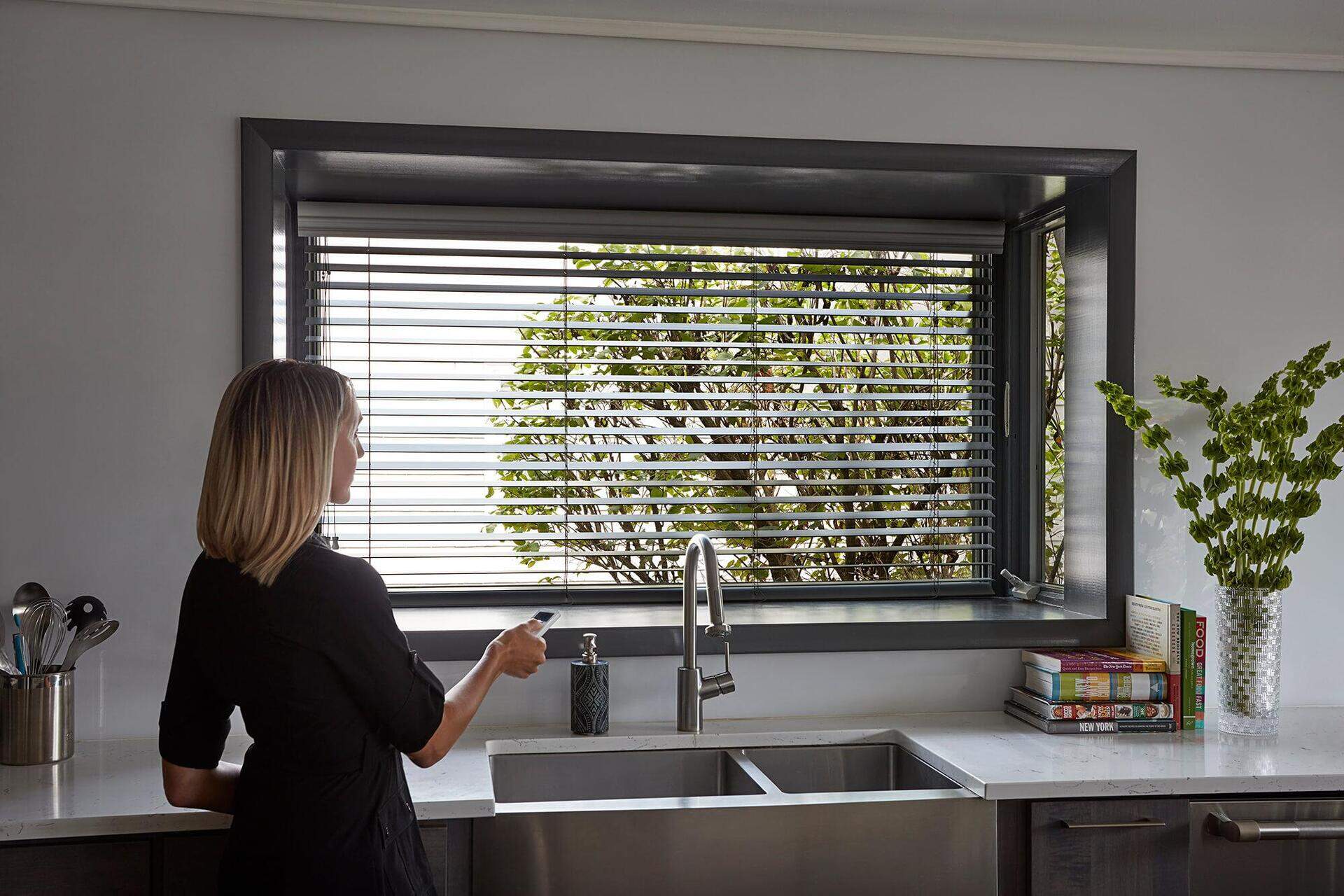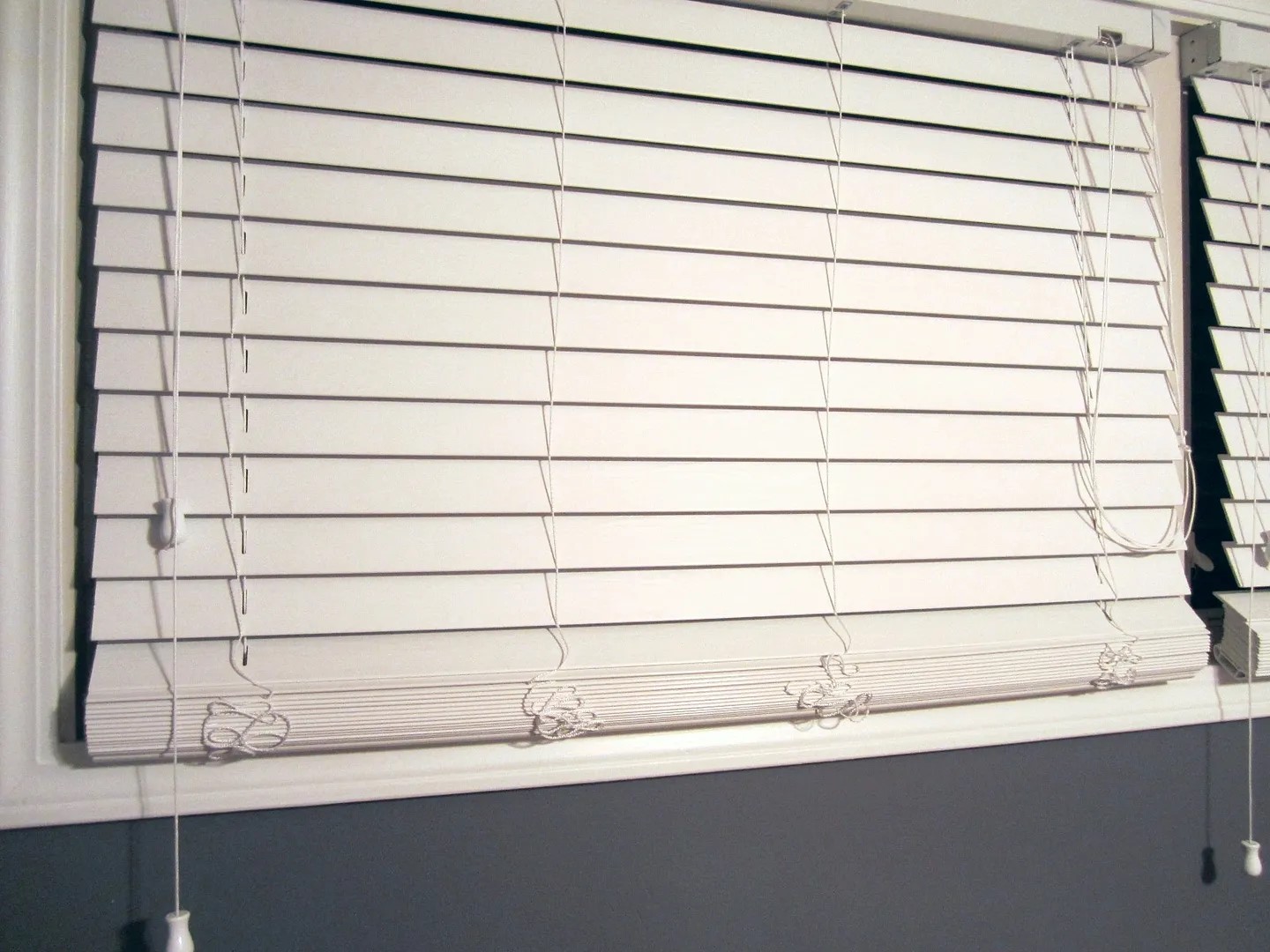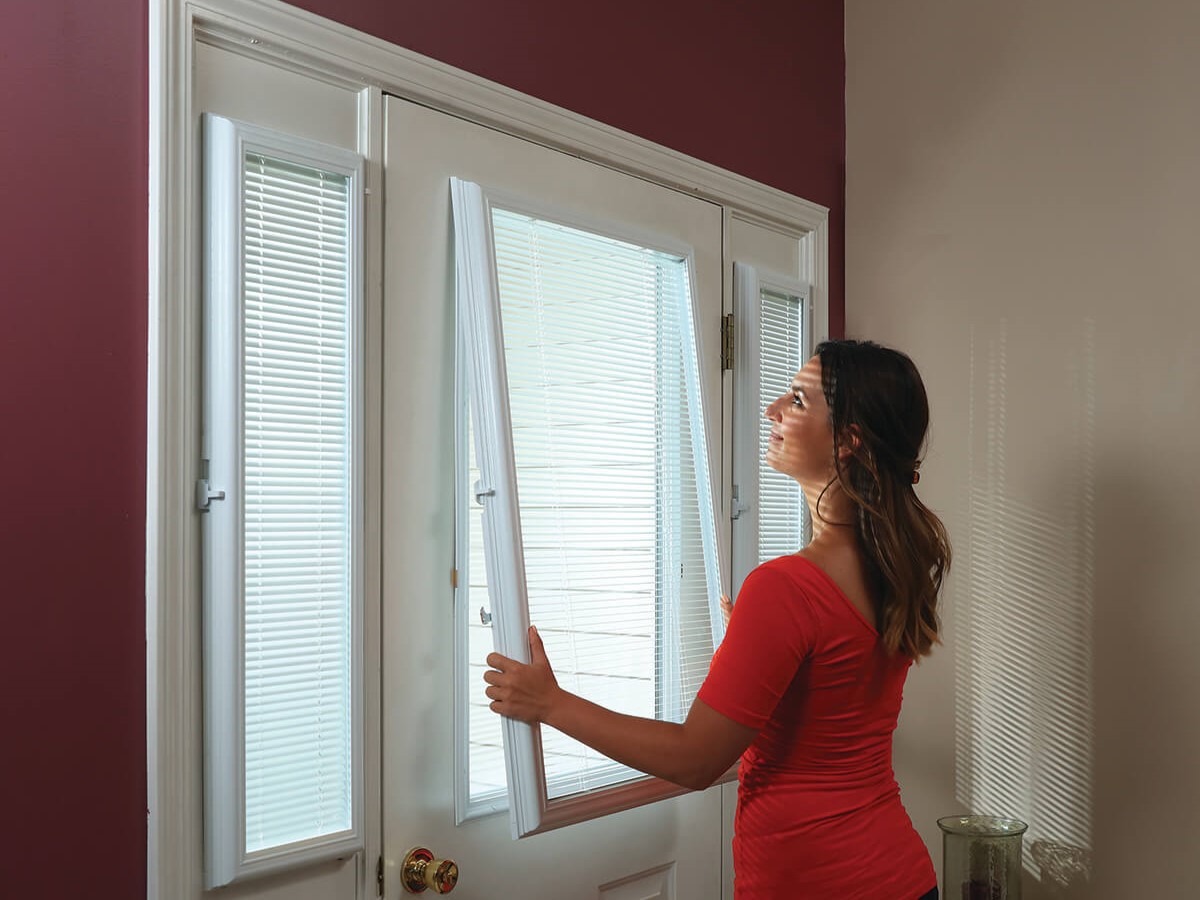

Articles
How To Measure Blinds For A Door
Modified: January 9, 2024
Learn the step-by-step process of measuring blinds for a door with our comprehensive articles. Ensure a perfect fit for your door blinds!
(Many of the links in this article redirect to a specific reviewed product. Your purchase of these products through affiliate links helps to generate commission for Storables.com, at no extra cost. Learn more)
Introduction
Measuring blinds for a door may seem like a daunting task, but with the right tools and a step-by-step approach, it can be a straightforward process. Whether you’re looking to install blinds for privacy, light control, or to enhance the aesthetic appeal of your door, accurate measurements are crucial to ensure a perfect fit.
In this article, we will guide you through the process of measuring blinds for a door, providing you with all the information you need to get started. From gathering the necessary tools to choosing between an inside or outside mount, we will cover each step in detail, making this seemingly complex task a breeze.
By following our instructions, you’ll be able to confidently measure your door and order the right blinds for your specific needs. So let’s get started!
Key Takeaways:
- Properly measuring blinds for a door involves gathering essential tools, accurately measuring width and height, and deciding between inside or outside mount. This ensures a perfect fit for enhanced privacy and aesthetic appeal.
- Whether calculating overlap for inside mount or measuring for outside mount, attention to detail is crucial. Ordering high-quality blinds and following installation instructions leads to a functional and stylish door transformation.
Read more: How To Install Blinds On A Door
Step 1: Gather necessary tools
Before you begin measuring your blinds, it’s essential to gather all the necessary tools. By having these items on hand, you’ll be prepared to accurately measure and install your blinds:
- Tape Measure: A tape measure is crucial for measuring the width and height of your door accurately. Make sure it’s long enough to reach from one end of the door to the other.
- Pencil or Pen: You’ll need a pencil or pen to mark the measurements on your door and any notes you may need to refer to later.
- Notepad or Paper: Have a notepad or piece of paper handy to write down your measurements and any other important information, such as the type of blinds you’re planning to install.
- Step Stool or Ladder: If your door is tall or out of reach, a step stool or ladder will allow you to comfortably and safely access the necessary areas for measuring.
- Level: To ensure your blinds hang straight, you’ll want to have a level to check the alignment of the blinds once they’re installed.
- Internet Access: If you’re planning to order blinds online, having internet access will enable you to browse and compare different options to find the perfect blinds for your door.
By having these tools at your disposal, you’ll be fully equipped to measure and install your blinds with ease. Before moving on to the next step, double-check that you have everything on this list to avoid any unnecessary delays or inconveniences.
Step 2: Measure the width of the door
Measuring the width of the door is the first step in ensuring that your blinds will fit correctly. Follow these steps to accurately measure the width:
- Start by positioning yourself in front of the door, facing it directly.
- Using your tape measure, measure the width of the door from one side to the other. Make sure to measure between the outermost edges of the door frame.
- When taking the measurement, always round down to the nearest 1/8 inch. This ensures that the blinds won’t be too wide for the opening.
- Write down the measured width on your notepad or piece of paper, as you will need this measurement when ordering your blinds.
Note: If your door has a trim or molding around it, measure the width between the inside edges of the trim or molding.
Take your time when measuring the width to ensure accuracy. It’s better to double-check your measurements to avoid any mistakes that could lead to ill-fitting blinds.
Once you have the correct width measurement, you can move on to the next step, which is measuring the height of the door.
Step 3: Measure the height of the door
After measuring the width of the door, the next step is to measure the height. Taking accurate measurements will ensure that your blinds fit perfectly. Follow these steps to measure the height:
- Stand in front of the door, facing it directly.
- Using the tape measure, measure the height of the door from the top to the bottom. Measure from the inside edge of the top frame to the inside edge of the bottom frame.
- Similar to measuring the width, round down to the nearest 1/8 inch to ensure that the blinds won’t be too long.
- Write down the measured height on your notepad or piece of paper.
Note: If your door has a sill or a threshold at the bottom, do not include it in the height measurement. Measure from the inside edge of the top frame to just above the sill or threshold.
Be meticulous when measuring the height to ensure accuracy. It’s better to take your time and double-check than to end up with blinds that are too short or too long.
With the width and height measurements in hand, you’re ready to determine the mounting location of your blinds, which is covered in the next step.
Step 4: Determine the mounting location
Determining the mounting location is an important step in the process of measuring blinds for a door. By deciding whether you want to mount the blinds on the inside or outside of the door frame, you will be able to calculate the exact measurements needed. Here’s how to determine the mounting location:
- Consider your personal preference and the functionality you desire. Mounting the blinds on the inside of the door frame offers a clean and streamlined look, while mounting them on the outside can provide better light control and privacy.
- Take note of any obstructions on the door frame, such as handles, locks, or trim. These may impact the mounting and require additional measurements and adjustments.
- Measure the depth of the door frame to ensure that it can accommodate the blinds. This measurement is especially important for inside mounts, as it determines whether the blinds will fit properly.
- Based on your preference and the factors mentioned above, decide whether you want to go with an inside or outside mount for your blinds.
Note: Inside mount blinds will fit within the door frame, while outside mount blinds will be mounted on the wall or above the door frame.
By determining the mounting location, you can proceed to the next steps, which will cover how to measure for both inside and outside mounts to ensure a perfect fit for your blinds.
When measuring blinds for a door, make sure to measure the width and length of the door frame accurately. Consider the type of blinds you want and whether they will fit inside or outside the frame.
Read more: How To Attach Blinds To A Metal Door
Step 5: Choosing inside or outside mount
When measuring blinds for a door, one important decision to make is whether you want to go with an inside or outside mount. Each option offers unique benefits, and the choice depends on your preference and the specific characteristics of your door. Here’s a breakdown of the two options:
Inside Mount:
- An inside mount involves installing the blinds within the door frame, providing a clean and streamlined look.
- This option works well if you have enough depth in your door frame to accommodate the blinds.
- Inside mount blinds can help showcase decorative door frames or trim.
- They can also maximize the view when the blinds are raised.
Outside Mount:
- An outside mount involves mounting the blinds on the wall or above the door frame, creating a frame-like effect.
- This option is suitable when the depth of the door frame is limited or when you want to maximize privacy and light blockage.
- Outside mount blinds can make the door appear larger and create a statement piece.
- They can also cover any imperfections or obstructions on the door frame.
Consider your preference, the overall style of your space, and the functionality you desire when choosing between an inside or outside mount. It’s also worth noting that inside mounts tend to be more popular for doors, as they offer a sleek and minimalist look. However, outside mounts can be a great option if you have specific design goals in mind or limited depth within the door frame.
Once you have made your decision, you can proceed with the respective measurement instructions for inside or outside mount, which will be covered in the following steps.
Step 6: Calculate overlap for inside mount
If you’ve chosen to go with an inside mount for your blinds, it’s important to calculate the necessary overlap to ensure proper coverage and functionality. The overlap refers to the amount of the blind that will extend beyond the actual glass area of the door. This step will help you determine the measurements needed for a perfect fit. Here’s how to calculate the overlap:
- Measure the width of the visible glass area on your door. This is the area that you want the blinds to cover.
- Subtract 1/2 inch from the measured width. This will be the width of your blinds.
- For the height, measure the visible glass area from the top to the bottom and subtract 1/2 inch. This will be the height of your blinds.
- The calculated width and height measurements will ensure that the blinds cover the glass area completely and provide the desired amount of privacy and light control.
Note: Subtracting 1/2 inch from the width and height helps ensure that the blinds fit within the door frame and have room to operate smoothly.
Make sure to double-check your calculations and measurements to avoid any errors. Accuracy is essential to achieve a well-fitted inside mount for your blinds. Once you have the calculated measurements, you can move on to the next step, which is measuring for an outside mount if you’ve chosen that option.
Step 7: Measure for outside mount
If you’ve decided to go with an outside mount for your blinds, it’s crucial to take accurate measurements to ensure a proper fit and desired coverage. Here’s a step-by-step guide on how to measure for an outside mount:
- Determine the desired width of the blinds by measuring the width of the door frame. Decide how much overlap you want on each side of the frame. Typically, adding 2 to 4 inches on each side is recommended for optimal light blockage and privacy.
- Measure the height of the door frame, starting from the top and ending at the desired length of the blinds. Consider whether you want the blinds to reach all the way down to the floor or if there are any obstructions that should be taken into account.
- Take note of any additional measurements if there are obstructions on or around the door frame. For example, if there is a handle or lock that extends beyond the frame, measure its depth to ensure that the blinds won’t interfere with its operation.
- Having gathered all the necessary measurements, ensure that you have accounted for any required overlaps or extensions.
Note: It’s important to measure both the width and height accurately to guarantee the blinds fit perfectly and provide the desired coverage.
By following these steps, you’ll be able to measure for an outside mount and determine the appropriate width and height for your blinds. Once you have these measurements, you can proceed to order your blinds and prepare for installation, which will be covered in the final step of the process.
Step 8: Order blinds and installation
After gathering all the necessary measurements, it’s time to order your blinds and prepare for installation. Here’s what you need to do:
- Choose a reputable blinds provider or retailer that offers a variety of options and high-quality products.
- Provide the accurate measurements you’ve taken, including the width, height, and any additional specifications such as inside or outside mount.
- Consider the type of blinds that best suits your needs and preferences. Options include roller blinds, vertical blinds, or horizontal blinds like Venetian blinds or cellular shades.
- Take into account factors such as light control, privacy, material, and any specific features you desire, such as blackout or cordless blinds.
- Place your order with the blinds provider, ensuring that all details are correct.
- While waiting for your blinds to arrive, prepare your door for installation. If necessary, clean the door frame and remove any existing blinds or hardware.
- Read the installation instructions provided by the blinds manufacturer carefully. Gather any additional tools or materials needed for the installation, such as a screwdriver or drill.
- When your blinds arrive, inspect them for any damage or defects before proceeding with the installation.
- Follow the step-by-step installation instructions provided by the manufacturer to properly install your blinds. Use a level to ensure the blinds are straight and adjust as needed.
- Double-check that the blinds are functioning correctly and that they provide the desired amount of privacy, light control, and aesthetics.
Once your blinds are properly installed, take a moment to appreciate the transformation they bring to your door. Enjoy the enhanced privacy, light management, and visual appeal that your new blinds provide.
Remember to clean and maintain your blinds regularly to keep them looking their best and to prolong their lifespan. Follow the manufacturer’s recommendations for proper care and maintenance.
Congratulations! You have successfully measured, ordered, and installed blinds for your door. Now you can sit back, relax, and enjoy the benefits of your new blinds.
Read more: How To Measure Blinds For Patio Door
Conclusion
Measuring blinds for a door may initially seem like a daunting task, but with the right approach and attention to detail, it can be a straightforward process. By following the steps outlined in this article, you can ensure a perfect fit and achieve the desired functionality, privacy, and aesthetic appeal for your door.
Remember to gather all the necessary tools, including a tape measure, pencil or pen, notepad, step stool or ladder, level, and internet access. These items will make the measuring process more efficient and accurate.
Start by measuring the width of the door, being mindful of any trim or molding. Then, measure the height carefully, taking any sills or thresholds into account. Determine whether an inside or outside mount is preferable, considering your personal preference and the design of your space.
If you choose an inside mount, calculate the necessary overlap to ensure proper coverage. For an outside mount, measure the width and height of the door frame, accounting for any desired overlap or extensions.
Once you have all the measurements, confidently order your blinds from a reputable provider, considering the type, material, and features that best suit your needs. When your blinds arrive, carefully follow the installation instructions, ensuring they are level and function correctly.
By properly measuring, ordering, and installing blinds for your door, you’ll not only enhance the privacy and light control in your space but also add a touch of style and sophistication. Enjoy the benefits of your new blinds and remember to maintain and clean them regularly to keep them looking their best.
With the knowledge gained from this article, you can confidently tackle the task of measuring blinds for a door and create a more functional and visually appealing environment in your home or office.
Frequently Asked Questions about How To Measure Blinds For A Door
Was this page helpful?
At Storables.com, we guarantee accurate and reliable information. Our content, validated by Expert Board Contributors, is crafted following stringent Editorial Policies. We're committed to providing you with well-researched, expert-backed insights for all your informational needs.
